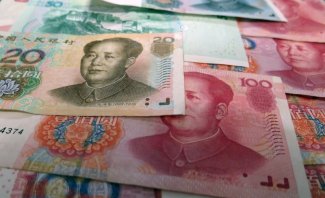Under the radar of big politics: cooperation between China and Ukraine

Chinese-Ukrainian relations are still defined by the events of 2014: the Ukrainian Revolution of Dignity and the Russian invasion of Ukraine. Their consequences continue to block high-level political dialogue between Kyiv and Beijing, which Washington (and to a certain extent Moscow as well) also does not want. However, Sino-Ukrainian economic cooperation is expanding rapidly, with trade as its main driver. In 2019 the PRC became Ukraine’s most important trading partner due to the rapid rise in Ukrainian exports. Beijing itself is sceptical of Ukraine’s post-2014 political transition and its turn to the West, but it is interested in Ukraine’s military technologies, raw materials and agricultural potential. Since President Volodymyr Zelensky came to power, Ukraine has clearly been seeking a new opening in its relations with China, looking to widen the foreign policy space in the game between the West and Russia. However, it remains essentially excluded from financial and investment cooperation under the Belt and Road Initiative. Any significant deepening of relations between Kyiv and Beijing would first and foremost require a resolution of the Russian-Ukrainian conflict. However, the existing dynamic economic cooperation ‘under the radar’ of great-power politics still has considerable potential.
The dream of a third foreign policy vector
Kyiv’s relations with the People’s Republic of China are conditioned to a significant extent by Ukraine’s geopolitical position between the West and Russia. The narrowing room for foreign-policy manoeuvre under Viktor Yanukovych’s presidency (2010–4), which was caused by Russian pressure for deeper economic integration, resulted in Ukraine pursuing a so-called ‘third foreign-policy vector’ focused on China.[1] This led to a rapid strengthening of bilateral Chinese-Ukrainian relations under Yanukovych, which the latter mainly used to gain additional leverage during negotiations with Russia and the West. However, further co-operation was halted by the Revolution of Dignity, the fall of Yanukovych, and the subsequent change of power in Kyiv. The threats to Ukrainian sovereignty and territorial integrity posed by the Russian aggression strengthened Ukraine’s Euro-Atlantic course, directing its policy towards joining Western integration structures (the European Union and NATO) and establishing strategic relations with the United States. As a result, political relations between Kyiv and Beijing stagnated during Petro Poroshenko’s presidency (2014–19).
Volodymyr Zelensky’s win in the elections for president of Ukraine in May 2019, followed by his party Servant of the Nation’s victory in the parliamentary elections, brought a change to Ukrainian rhetoric. Kyiv resumed its search for a foreign policy direction that went beyond containment of Russia and integration with the West, and started to look again at China. The new Ukrainian foreign minister, Dmytro Kuleba, declared Ukraine’s active participation in China’s Belt and Road Initiative in a policy paper published shortly after his appointment in March 2020. He described it as an opportunity to break the country’s unfavourable geopolitical position of being “stuck in the US-EU-Russia triangle”.[2] Those bold announcements were supplemented by President Zelensky’s declarations concerning his readiness to join the Belt and Road Initiative. In his opinion, Ukraine has the greatest potential of all the Eastern European countries to play a crucial role in China’s initiative. The importance of Sino-Ukrainian relations will be further emphasised by Zelensky’s visit to Beijing, planned as part of his ‘diplomatic tour’ of Asia in 2021.
However, these rhetorical shifts should be understood as political demonstrations for domestic consumption, rather than an expression of Ukrainian diplomacy’s real capabilities. In its attempts to bring a ‘new opening’ to its relations with Beijing over the past two years, Ukraine has much less room for manoeuvre than it did before 2014. As a result of the still ongoing war in the Donbas, Sino-Ukrainian relations have become de facto hostage to Kyiv’s relations with Washington and Moscow. Moreover the US, as part of its own global confrontation with Beijing, has begun to openly block Sino-Ukrainian cooperation in key areas. The revival of relations between China and Ukraine which has been observed since 2019 is thus taking place in the shadow of the major powers’ policies.
Beijing’s limited ambitions
China’s reaction to Russia’s invasion of Ukraine clearly shows that Beijing has no ambition to play a leading role in Eastern Europe’s geopolitical struggle. However, it remains sympathetic towards Russia’s actions, and recognises its alleged sphere of influence in the region. Officially, the PRC has remained neutral during the Russian-Ukrainian conflict, and has not participated in the negotiations on its resolution. In response to the annexation of Crimea, Beijing expressed general support for the principle of territorial integrity, but abstained in the UN Security Council vote on the illegality of the annexation. The PRC’s ambiguous position stems from its general opposition to all separatist movements (linked to domestic factors, such as Tibet and Xinjiang), while at the same time sharing Moscow’s view of the origins of the Revolution of Dignity in Ukraine.
The elites in Beijing see the 2013–14 protests as yet another so-called Western-inspired ‘colour revolution’.[3] In the opinion of some Chinese experts and diplomats, Ukraine’s turn to the West was imposed by the EU and the US, displacing Ukraine from what Beijing sees as its natural position balancing between the West and Russia.[4] In turn, the PRC interprets many events in Ukrainian politics as direct US interventions. Paradoxically, this leaves some room for cooperation with the Ukrainian elites in the future should relations between Kyiv and Washington ever deteriorate.
Beijing perceives Ukraine as a risky place to invest capital, not only due to the political conditions, but also because of bad past experiences. Most of the agreements concluded with President Yanukovych in 2013 were not implemented, leaving some Chinese entities with semi-finished projects. However, the scale of Chinese plans from that period indicates that Beijing envisaged an important place for Ukraine in the Belt and Road Initiative, including in the development of Eurasian transport.
The unfavourable geopolitical situation has essentially blocked high-level dialogue between China and Ukraine over the past eight years. Meetings between leaders were limited to President Poroshenko’s talks with Premier Li Keqiang and President Xi Jinping in Davos. However, bilateral dialogue has taken place at the vice-premiers’ level, including a visit by the Chinese Vice-Premier for Economic Affairs Ma Kai to Ukraine in 2017.[5] The bilateral intergovernmental group established in 2011 has also been active.
Beijing’s continuous low-level engagement reflected the actions of Chinese interest groups, primarily in the raw materials, agricultural, and military technology sectors. The potential of Ukrainian agriculture is well appreciated by Beijing. During Yanukovych’s rule, it negotiated large leases of agricultural land with Ukraine, and China is currently the largest importer of Ukrainian foodstuffs. China also sees Ukraine as an attractive source for acquiring Soviet military technology. For example, China’s first aircraft carrier, the Liaoning, is based on a hull purchased from Ukraine in 1998. In 2016, the Chinese company Skyrizon Aircraft – which is owned by Wang Jing, a Chinese billionaire with ties to the Chinese military and the Chinese Communist Party – began efforts to purchase the Motor Sich plant. The company is one of the world’s largest manufacturers of aircraft engines for both the civilian and military markets. China saw this acquisition as crucial because of the PRC’s technological gap in this area, leading it to rely on the import of several types of engines from Russia.
The American intervention
Technological cooperation between China and Ukraine has been effectively derailed by US opposition to the sale of Motor Sich to Skyrizon Aircraft. The United States sees the potential takeover of the Ukrainian company as a threat to national security, and has forced the government in Kyiv to abandon the transaction.[6] For the Ukrainian company, which has struggled to keep operating since military-technical cooperation with Moscow was broken off (until 2014, 75% of Motor Sich’s export production was supplied to the Russian market), Chinese capital was seen as the best chance to avoid bankruptcy. The cooperation began in 2016, when Skyrizon provided Motor Sich with a $100 million low-interest loan; the two companies began the joint construction of a motor plant in China’s Chongqing. Under the Sino-Ukrainian agreement of May 2017, Skyrizon began the process of acquiring Motor Sich’s shares in exchange for the recapitalisation of the company.[7]
The attempt to sell a majority stake in Motor Sich to Chinese shareholders triggered a response from the Security Service of Ukraine. In July 2017, it opened an investigation on the grounds of illegal actions taken by the company’s management which could pose risks to state security. Two months later, the Antimonopoly Committee of Ukraine initiated proceedings to clarify the circumstances and conditions of the transaction, blocking its implementation. In April 2019, Chinese investors made another attempt to take over Motor Sich, this time on the basis of a cooperation agreement with the Ukrainian state-owned UkrOboronProm company. The plan involved raising the shareholding of several Skyrizon-linked Chinese companies to 50% and the admission of a state-owned Ukrainian company with a 25% stake. The United States strongly opposed this scenario. In August 2019, during a visit to Kyiv, the US presidential security advisor John Bolton warned against selling Motor Sich to Chinese capital, putting considerable pressure on the Ukrainian authorities.
Finally, in September 2020 the Antimonopoly Committee of Ukraine rejected the Chinese company’s proposal to buy Motor Sich. Moreover, at the end of January 2021, President Zelensky signed a decree sanctioning Skyrizon and its owners. This decision was accompanied by an unprecedented action on the part of the Security Service of Ukraine, which entered the headquarters of the Motor Sich company in Zaporizhia, preventing the holding of a meeting of the company’s shareholders. In mid-March 2021, the National Security and Defence Council of Ukraine decided to nationalise the company. In response, Beijing sent a diplomatic note to Kyiv protesting at what it saw as unlawful actions by the Ukrainian government. In December 2020, a Chinese company filed an arbitration case against Ukraine, demanding compensation of $3.5 billion.
However, in an interview to Chinese media at the end of January 2021, President Zelensky stated that Ukraine does not see China as a “geopolitical threat”, despite the blocking of technological cooperation.[8] Comments in the official Chinese press just after the Ukrainian decision on sanctions linked Zelensky’s action directly to US pressure, while indicating that this need not translate negatively into other areas of Sino-Ukrainian cooperation.[9] For both sides, therefore, the conflict over Motor Sich did not spill over to their cooperation in other fields.
The American intervention in the Motor Sich case was the first clear act of US opposition to Chinese plans for economic expansion in Ukraine. Washington’s determination was reflected in its hard negotiations with Kyiv, linking the Motor Sich case with a review of spending on military aid to Ukraine ($250 million in 2020). Kyiv’s ultimate decision was conditioned by the need to maintain good relations with the US, which is a key partner for it in the face of Russian aggression. The US is the main donor of military aid (approximately US$300 million per year on average) to Ukraine, and a major donor of civil and development aid (approximately US$150 million per year on average) over the past seven years.
The Russian factor
The deterioration of Sino-Ukrainian cooperation immediately after 2014 should also be linked to Russia’s actions. Beijing’s propaganda clearly supported Moscow during the Russian aggression against Ukraine, which chilled its relations with Kyiv. The absence of Ukrainian leaders at the most important international events in Beijing, such as the Belt and Road Forums, should also be linked to the Russian factor. Vladimir Putin was a participant at these events, where Beijing repeatedly referred to Russia as one of its most important partners. Kyiv also failed to participate in a number of sectoral initiatives set up by Beijing, including the cooperation framework set up by national rail carriers as part of the development of corridors between China and the EU (the so-called Six Railways Cooperation), in which Russia plays a key role.
In addition to political measures, Moscow also launched a trade war with Kyiv after 2014. This deprived Ukraine of access to many of its markets in the post-Soviet area, leading to the collapse of Ukrainian exports.[10] The introduction of restrictions on the land transit of Ukrainian goods through Russian territory in January 2016 proved to be particularly acute, as it significantly reduced trade with Asian countries. For several years this excluded Ukraine from the China-EU rail transport market, in which – before 2014 – it had played an important role as a transit country.
However, Russia’s position on Ukraine’s participation in the Belt and Road Initiative has partially shifted since Zelensky took office. This change may be associated with the desire to play the rapprochement between Kyiv and Beijing to its advantage, as well as Moscow's partial withdrawal from its policy of exploiting its key transit position in China-EU rail transport to put pressure on its neighbours. As a sign of this gradual relaxation, transit from China to Ukraine via Russian territory was restored in 2019. President Putin’s cancellation of the restrictions was allegedly made after a personal intervention from Viktor Medvedchuk, the leader of the pro-Russian Opposition Platform–For Life party. This was intended as an important sign of support for this party in the run-up to the parliamentary elections.[11] Russia’s conciliatory stance was part of a broader trend; in 2019, for example, Moscow also lifted its embargo on the transit of food products from the EU to China, which had been an element of Russian sanctions in previous years.
Economic cooperation ‘under the radar’ of great-power politics
Despite President Zelensky’s focus on the geopolitical aspects of his country’s cooperation with China, the main driver of Sino-Ukrainian relations is trade, primarily Ukrainian exports. Between 2017 and 2020, these rose from $2.1 billion to $7.1 billion, mostly due to sharp rises in sales to China of iron ore (264%), corn (327%), as well as other grains and vegetable oils.[12] In the agricultural sector, Ukraine has taken advantage of the Sino-US trade wars which led to a temporary suspension of Chinese imports from the US in 2018. Ukraine then overtook the US as the most important exporter of cereals (including corn) to China, although it lost that position again after the Sino-US ‘trade truce’ in 2020. In 2019 the PRC became Ukraine’s most important trading partner. In 2020, trade in goods between the two countries reached a record $15.5 billion, a increase of 21% over the previous year. China is currently both the most important market for Ukrainian exports (14.4% of the total) and the most important source of imports (15.3%).[13]
This dynamic growth in bilateral trade has been accompanied by Beijing’s diplomatic actions. During the December 2020 meeting of the Sino-Ukrainian intergovernmental commission, both sides signed a preliminary document on a possible trade agreement between Ukraine and China (focusing on the agri-food sector), as well as a memorandum on cooperation within the framework of the Belt and Road Initiative. Although those agreements are non-binding and do not go beyond China’s usual cooperation with other countries (Beijing has signed memoranda on the Belt and Road with approximately 140 countries),[14] they nevertheless illustrate Beijing’s growing interest in more formal cooperation with Ukraine.
After the outbreak of the COVID-19 pandemic, medical equipment purchases for Ukrainian hospitals became yet another driver of cooperation. A number of bilateral agreements were signed, including at the foreign-minister level. Kyiv also signed a contract with a Chinese vaccine manufacturer, which was expected to significantly boost the process of vaccinating the Ukrainian population.[15] However, the Chinese aid did not turn out to be unconditional, and became a tool of political pressure. In July 2021, China threatened to stop the transport of the purchased vaccines to Ukraine. Beijing’s action forced Kyiv to withdraw its signature from the UN Human Rights Council’s appeal to set up an international observer mission in Xinjiang province to investigate the persecution of the Uighur minority in China.[16]
Since 2019, Ukraine has again participated in rail transport between China and the European Union. In 2019, Chinese companies started direct services between Chinese cities and Ukrainian logistical centres, which has mainly facilitated bilateral trade. Ukraine has also started to play a role in transit between China and the European Union, serving as an alternative to the main route via Belarus. However, routes through Ukraine accounted for only about 1% of total EU-China traffic in 2020. The further development of transit through Ukraine could potentially change the geography of competition among European logistics hubs: it offers the possibility of full overland transportation not only through the currently predominant Polish-Belarusian border crossing at Brest/Terespol (with the Małaszewicze dry port), but also via Ukrainian territory to Hungary, Slovakia and southern Poland.[17]
This booming trade, however, has not translated into a significant inflow of Chinese investments and loans to Ukraine. In total, the Chinese FDI inflow in 2015–19 amounted to $300 million (mainly in transport infrastructure, the energy sector and the agricultural industry).[18] Since 2014 China has provided several commercial loans to Ukrainian entities, including for the modernisation of the grain-products terminal in the port of Mykolayiv and the construction of one of Europe’s largest solar power plants in Nikopol. However, other large projects – such as the high-speed rail link to Boryspil airport and the participation of Chinese contractors in the construction of Kyiv’s fourth metro line – have been abandoned. By comparison, in the past decade China’s loans to Ukraine’s neighbour Belarus have amounted to about $4.6 billion, and Chinese entities have invested about $450 million there.[19] In order to boost their cooperation, China and Ukraine signed an agreement to co-operate on infrastructure construction in early July 2021. This document states that Beijing will provide Ukrainian companies with low-interest loans for projects involving the expansion and modernisation of road and railway infrastructure, as well as sea ports and airports.[20] The framework agreement is non-binding and should be seen as marking the beginning of further negotiations. It also formed the pretext for the first telephone conversation between President Zelensky and President Xi Jinping.[21]
Prospects for a new opening between Kyiv and Beijing
Economic cooperation between China and Ukraine, as well as bilateral diplomatic contacts, have clearly accelerated during Zelensky’s presidency. Kyiv should be considered as the driving force behind this ‘new opening’, as it sees cooperation with China as an opportunity for a partial resumption of its ‘third vector’ policy. It also aims at using Chinese capital as a new impulse to development. Despite the Motor Sich dispute, China’s interest in Ukraine is growing – due to the two nations’ booming trade, but also due to growing disillusionment with China’s cooperation with Minsk.[22] Beijing has developed a much more complex framework of institutional cooperation with Lukashenka’s regime, based on multi-billion dollar credit lines, the Great Stone economic zone, and the active development of transport corridors running through Belarus. However, it currently sees Ukraine as much more commercially attractive than Belarus, as its ossified state-owned economy is unattractive to Chinese companies.
In Beijing’s global approach, relations with resource-rich partners similar to Ukraine are usually based on the significant involvement of Chinese state capital. State finance is directed to increasing local export capacity through loans and investment in transport infrastructure, large land leases, or the creation of special economic zones. This mode of cooperation demands an intensive high-level political dialogue and comprehensive intergovernmental contacts, usually with the personal involvement of the PRC leadership. In order to move Sino-Ukrainian relations to the next stage, Ukraine would have to accept the – fairly standard – terms of economic co-operation which Beijing offers. Lessons from the Belarus case show that China’s focus on concessional loans, resulting in debt distress and the transfer of most of the added value to Chinese entities, have led to tensions between Beijing and Minsk.
A significant deepening of cooperation between Kyiv and Beijing, comparable in scale to the plans introduced during Yanukovych’s rule, would require the overcoming of the existing geopolitical barriers that stem from the positions adopted by Washington and Moscow. This does not seem likely in the short to medium term. Washington’s global rivalry with China will push it to put even more pressure on the government in Kyiv to keep Beijing out of Ukraine’s strategic industries. Washington also regards credit co-operation with China as particularly dangerous and likely to create long-term dependencies, unlike the ‘under the radar’ trade or transport co-operation which it usually accepts. The scope of Ukrainian-Chinese relations will thus be limited by American interests, especially in the reality of Ukraine’s significant military dependence on the US in its armed conflict with Russia.
Moscow has selectively sabotaged Sino-Ukrainian cooperation in recent years in order to pressurise and isolate Ukraine on the international stage. As the US-China global conflict intensifies, the Kremlin may seek to stoke possible tensions between Washington and Kyiv over cooperation with China. In order to block rapprochement between Ukraine and the West, Russia may try to encourage the ‘new opening’ with China proposed by President Zelensky, seeing in this an opportunity to reduce American influence. As was the case with railway transport, Russia’s unblocking of certain areas of Sino-Ukrainian co-operation may also be aimed at influencing Ukrainian domestic policy, or achieving the objectives of Russia-backed interest groups. US influence in Eastern Europe is seen as the main threat to the rule of the current political elite in the Kremlin. This may induce Russia’s tacit consent to Chinese economic and political expansion in Ukraine. However, this dynamic will most probably have its limits. In Moscow’s eyes, China’s actions should not undermine Russia’s self-perceived sphere of influence in Ukraine; nor should it support the Ukrainian economy enough to allow Kyiv to play a more assertive game with Moscow.
[1] S. Matuszak, ‘Yanukovych in China – Chinese investments in Ukraine announced’, OSW, 9 September 2010, osw.waw.pl.
[2] Д. Кулеба, ‘Азійська кухняуКиєві’, Українська Правда, 6 April 2020, blogs.pravda.com.ua.
[3] ‘The West's fiasco in Ukraine’, Xinhua, 7 March 2014, after: globaltimes.cn.
[4] Author interviews with Chinese experts, Beijing, 2016–2019.
[5] At that time, he visited, among others, the Antonov Aviation Plant in Ukraine.
[6] Ibid.
[7] For more on this, see P. Żochowski, A. Wilk, J. Jakóbowski, ‘Chiny czy USA: ukraińskie dylematy wokół przyszłości Motor Siczy’, OSW, 4 September 2019, osw.waw.pl.
[8] J. Swan, ‘Exclusive: Ukraine's Zelensky says he doesn't feel China threat’, Axios, 31 January 2021, axios.com.
[9] Zhao Huirong, ‘Sanctions should not determine Ukraine's overall China policy’, China Daily, 4 February 2021, global.chinadaily.com.cn.
[10] S. Matuszak, In search of new routes. Ukraine's foreign trade after the Revolution of Dignity, OSW, Warsaw 2018, osw.waw.pl.
[11] ‘Медведчук заявил, что РФ сняла часть санкций с Украины’, Интерфакс, 25 June 2019, interfax.ru.
[12] Source: trademap.org.
[13] Країни за товарною структурою зовнiшньої торгiвлiУкраїни за сiчень-грудень 2019 року, Державна служба статистики України, ukrstat.gov.ua.
[14] 国家发展和改革委员会,’中国与乌克兰政府签署共建 "一带一路"合作规划‘ [Chinese and Ukrainian governments sign plan to develop cooperation under Belt and Road Initiative], PRC National Development and Reform Council, 23 December 2020, ndrc.gov.cn.
[15] S. Matuszak, ‘Chińska szczepionka dla Ukrainy‘, OSW, 14 January 2021, osw.waw.pl.
[16] J. Keaten, ‘Diplomats say China puts squeeze on Ukraine’, Associated Press, 25 July 2021, apnews.com.
[17] J. Jakóbowski, K. Nieczypor, F. Tyszka, ‘Modernizacja suchego portu Záhony: węgierska próba przejęcia przewozów kolejowych z Chin’, OSW, 28 January 2021, osw.waw.pl.
[18] ‘Советник по торгово-экономическим вопросам Польсоства КНР в Украине Лю Цзюнь:В будущем мы надеемся увидеть больше украинской продукции с высокой добавленной стоимостью на китайском рынке’, Интерфакс-Украина, 19 February 2020, interfax.com.ua.
[19] ‘Прямые иностранные инвестиции во внутреннюю экономику Республики Беларусь за 2010–2019 годы’, Национальный банк Республики Беларусь, nbrb.by; J. Jakóbowski, K. Kłysiński, The non-strategic partnership. Belarus-China relations, OSW, Warsaw 2021, osw.waw.pl.
[20] ‘Україна та Китай підписали угоду проспів працюу галузі будівництва інфраструктури’, Кабінет Міністрів України, 6 July 2021, kmu.gov.pl.
[21] ‘Состоялся первый телефонный разговор Владимира Зеленского с Председателем КНР Си Цзиньпином’, Офис Президента Украины, 13 July 2021, president.gov.ua.
[22] Ibid.





